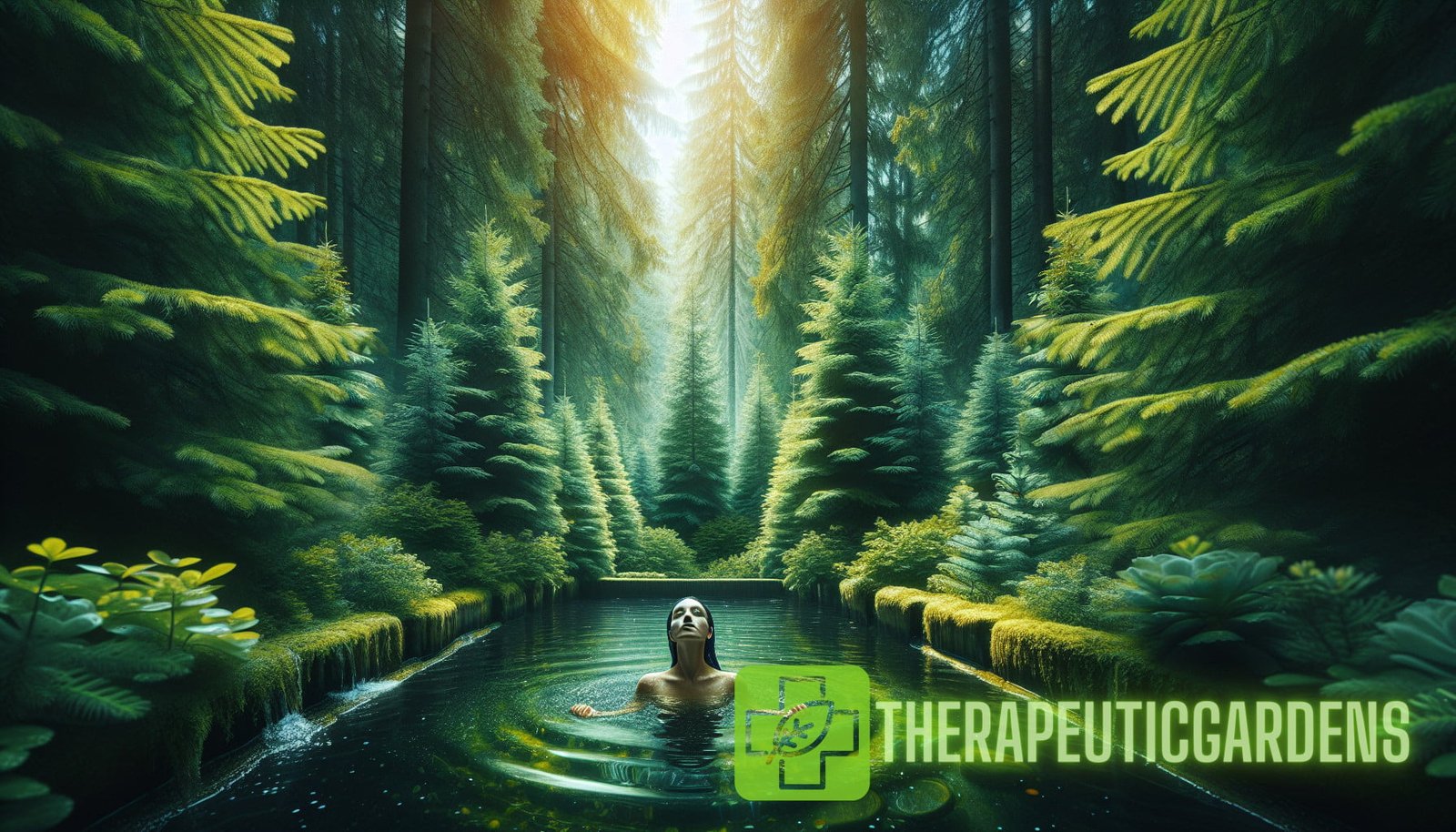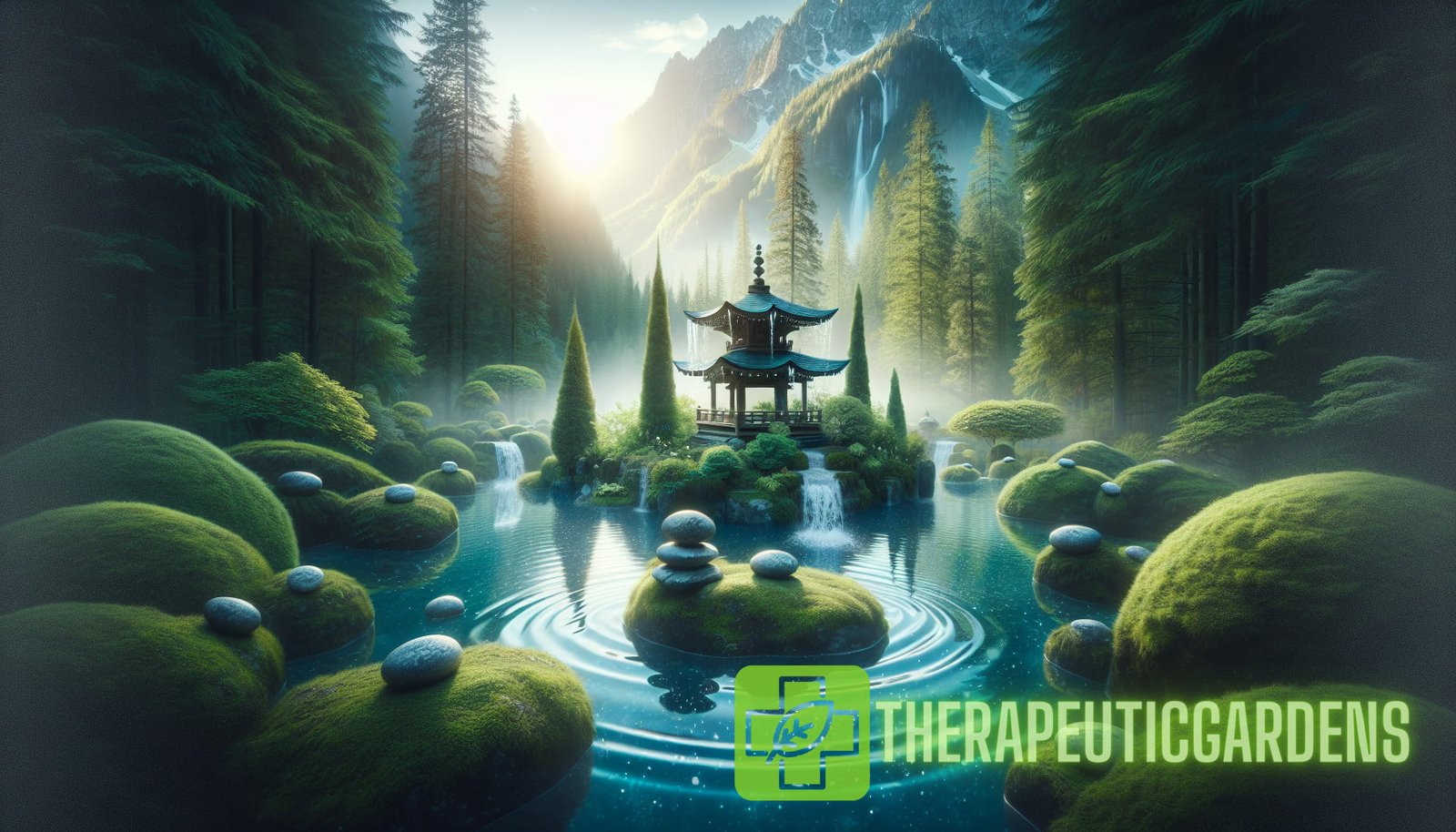Introduction
Hydrotherapy, also known as water therapy or aquatic therapy, is the use of water in various forms and temperatures to promote physical and psychological well-being. It has been used for centuries in different cultures around the world, and its healing properties are well-documented.
In recent years, hydrotherapy has gained recognition as a complementary therapy for mental health conditions. The soothing and therapeutic effects of water can have a profound impact on psychological well-being, helping to reduce stress, anxiety, and depression, and promoting relaxation and overall mental wellness.
In this article, we will explore the healing power of hydrotherapy in evergreen sanctuaries and how water-based techniques can nurture psychological well-being. We will delve into the benefits of hydrotherapy for mental health, the different types of water-based therapies available, and how they can be integrated into evergreen sanctuaries to create nurturing environments for individuals seeking emotional healing and rejuvenation.
An article available at https://therapeuticgardens.store/mental-health/unlocking-tranquility-discover-the-transformative-power-of-water-in-evergreen-mental-gardens-article/ and https://therapeuticgardens.store/mental-health/garden-meditation-nurturing-peace-and-mental-well-being-through-mindfulness/.
The Benefits of Hydrotherapy for Mental Health
Hydrotherapy offers a range of benefits for mental health. The combination of water, temperature, and movement can have a transformative effect on the mind and body. Here are some of the key benefits of hydrotherapy for mental health:
- Reduces Stress and Anxiety: The warm and soothing properties of water can calm the nervous system and reduce stress and anxiety. Immersing oneself in water creates a sense of weightlessness and promotes relaxation, allowing the mind and body to unwind.
- Alleviates Depression: Hydrotherapy has been shown to be effective in alleviating symptoms of depression. The sensation of floating in water and the gentle pressure of water on the skin can stimulate the release of endorphins and other feel-good hormones, improving mood and boosting overall mental well-being.
- Improves Sleep: Insomnia and sleep disturbances are common symptoms of many mental health conditions. Hydrotherapy can help improve sleep quality by promoting deep relaxation and reducing muscle tension. The warm water can also raise body temperature, leading to a natural drop in temperature afterward, which can facilitate better sleep.
- Enhances Relaxation and Mindfulness: Immersion in water encourages a state of mindfulness and deep relaxation. The sound and sensation of water can drown out distractions and allow individuals to focus on the present moment, promoting a sense of calm and well-being.
- Boosts Self-esteem: Hydrotherapy can have a positive impact on self-esteem and body image. Being in water can provide a safe and non-judgmental environment where individuals feel supported and accepted. This can help reduce feelings of self-consciousness and improve self-confidence.
- Promotes Social Interaction: Participating in hydrotherapy activities in shared spaces can promote social interaction and alleviate feelings of isolation and loneliness. Group water exercises or therapy sessions can foster a sense of community and support.
Overall, hydrotherapy offers a holistic approach to mental health, addressing both physical and psychological well-being. Its benefits are diverse and can have a transformative effect on individuals seeking emotional healing and rejuvenation.
The Different Types of Hydrotherapy
Hydrotherapy encompasses a wide range of techniques that utilize water for therapeutic purposes. Here are some of the different types of hydrotherapy commonly used for mental health:
1. Hydrothermal Therapy
Hydrothermal therapy involves the use of water at different temperatures, including hot and cold water, steam, and ice, to stimulate the body’s natural healing mechanisms. This type of therapy can promote relaxation, relieve muscle tension, and improve blood circulation, all of which can have a positive impact on mental health.
2. Water Immersion
Water immersion therapy involves immersing the body in water, either partially or fully. This can include activities such as baths, showers, or floating in a pool or tank. Water immersion therapy can promote relaxation, reduce anxiety, and improve mood. The sensation of floating in water creates a feeling of weightlessness and provides a soothing and nurturing environment.
3. Aquatic Exercise
Aquatic exercise, also known as water aerobics or water therapy, involves performing physical exercises in water. This can include swimming, walking, or engaging in structured group exercises. Aquatic exercise provides a low-impact and supportive environment for exercise, promoting physical fitness and improving mental well-being. The buoyancy of water reduces the impact on joints and muscles, making it an ideal therapy for individuals with physical limitations.
4. Contrast Hydrotherapy

Contrast hydrotherapy involves alternating between hot and cold water to stimulate blood flow and circulation. This type of therapy can help reduce inflammation, improve immune function, and invigorate the body. The contrast between hot and cold water can create a stimulating and rejuvenating experience, promoting both physical and mental well-being.
Internal Links:
- Unlocking Tranquility: Discover the Transformative Power of Water in Evergreen Mental Gardens
- Garden Meditation: Nurturing Peace and Mental Well-being through Mindfulness
These are just a few examples of the different types of hydrotherapy available. Each type offers unique benefits and can be tailored to meet individual needs and preferences. The integration of these techniques into evergreen sanctuaries can create nurturing environments that support emotional healing and well-being.
Integrating Hydrotherapy in Evergreen Sanctuaries
Evergreen sanctuaries are carefully designed spaces that incorporate natural elements to promote healing and well-being. The integration of hydrotherapy techniques in these sanctuaries can enhance their therapeutic effects and create immersive environments that foster psychological well-being.
Here are some key considerations for integrating hydrotherapy in evergreen sanctuaries:
1. Designing Water Features
Water features play a crucial role in creating a calming and serene environment in evergreen sanctuaries. The design of ponds, streams, or waterfalls can incorporate hydrotherapy techniques, such as water immersion or contrast hydrotherapy. These features can be designed to allow visitors to interact with water, either through sitting areas, bridges, or foot baths, providing a tranquil and rejuvenating experience.
2. Creating Hydrothermal Zones
Hydrothermal zones can be created within evergreen sanctuaries to provide spaces for temperature-based therapies. These zones can include hot tubs, saunas, or steam rooms, where visitors can experience the therapeutic effects of heat and steam. The design and placement of these zones should ensure privacy and tranquility, allowing individuals to indulge in the healing properties of heated water and steam.
3. Incorporating Aquatic Exercise Facilities
Aquatic exercise facilities, such as swimming pools or therapy pools, can be incorporated into evergreen sanctuaries to promote physical fitness and mental well-being. These facilities can provide spaces for water-based exercises or group therapy sessions, fostering social interaction and community building. The design of these facilities should prioritize accessibility and inclusivity, ensuring that individuals of all abilities can participate.
4. Integrating Soundscapes
The use of sound in hydrotherapy can enhance its therapeutic effects. Incorporating soundscapes, such as the sound of flowing water or gentle rain, can create a calming and immersive environment. The design of evergreen sanctuaries should consider the placement of water features and the use of natural sound elements to promote relaxation and mindfulness.
Conclusion
Hydrotherapy offers a powerful tool for nurturing psychological well-being in evergreen sanctuaries. The combination of water, temperature, and movement can have transformative effects on mental health, reducing stress, anxiety, and depression, and promoting relaxation and overall well-being.
By integrating hydrotherapy techniques into evergreen sanctuaries, individuals can immerse themselves in nurturing environments that support emotional healing and rejuvenation. From water immersion to hydrothermal therapy and aquatic exercises, there are various techniques that can be employed to create transformative experiences.
As the healing power of hydrotherapy becomes more widely recognized, the integration of water-based therapies in evergreen sanctuaries will play a significant role in promoting psychological well-being and offering unique spaces for individuals seeking respite and rejuvenation.



